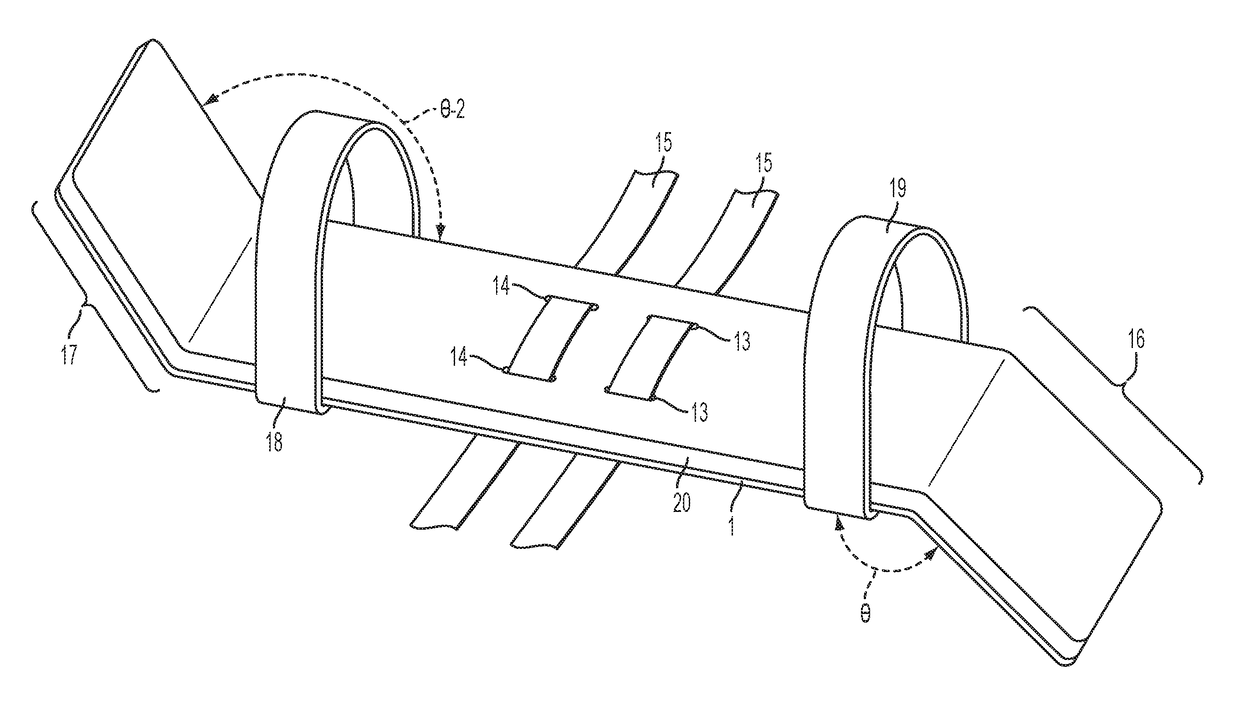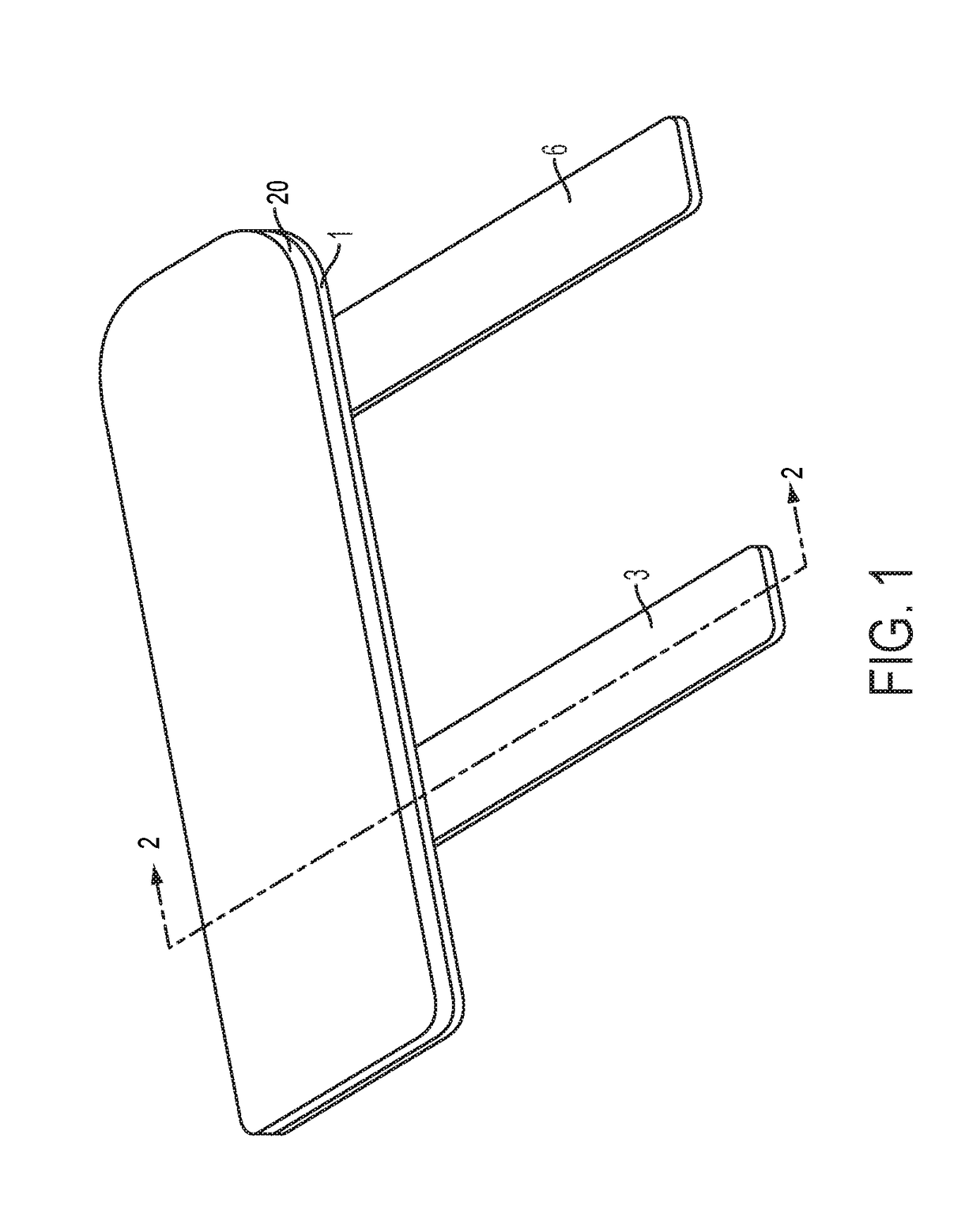Arm restraint for iv site stability
a technology for iv site stability and arm restraints, which is applied in the field of upper extremity restraints, can solve the problems of limited restraints, unfavorable patient iv therapy, so as to prevent the formation of hematomas or other types of patient injuries, and the upper limb positioning can be reversed
- Summary
- Abstract
- Description
- Claims
- Application Information
AI Technical Summary
Benefits of technology
Problems solved by technology
Method used
Image
Examples
Embodiment Construction
[0019]Embodiments of the present invention may be used to restrain the upper extremity, either proximal or distal sections or combinations thereof, including but not limited to hand, wrist, lower arm, upper arm and shoulder. Embodiments of the present invention are also useful for providing stability to IV catheterization sites and to decrease extremity movements. Restraint of the upper extremity is particularly desirable when IV therapy continues post-surgical procedure, e.g., post-cardiac catheterization, angiographies, etc. Embodiments of the present invention may also be used in any non-surgical situation that requires maintaining the integrity of an IV insertion placement. For example, such situations may include, but are not limited to when a patient experiences trauma, seizures, intoxication, tremors, delirium, etc.
[0020]Referring to FIG. 1, the upper extremity restraint of the present invention may be sized to fit newborn and pediatric patients.
[0021]In an exemplary embodime...
PUM
 Login to View More
Login to View More Abstract
Description
Claims
Application Information
 Login to View More
Login to View More - R&D
- Intellectual Property
- Life Sciences
- Materials
- Tech Scout
- Unparalleled Data Quality
- Higher Quality Content
- 60% Fewer Hallucinations
Browse by: Latest US Patents, China's latest patents, Technical Efficacy Thesaurus, Application Domain, Technology Topic, Popular Technical Reports.
© 2025 PatSnap. All rights reserved.Legal|Privacy policy|Modern Slavery Act Transparency Statement|Sitemap|About US| Contact US: help@patsnap.com



